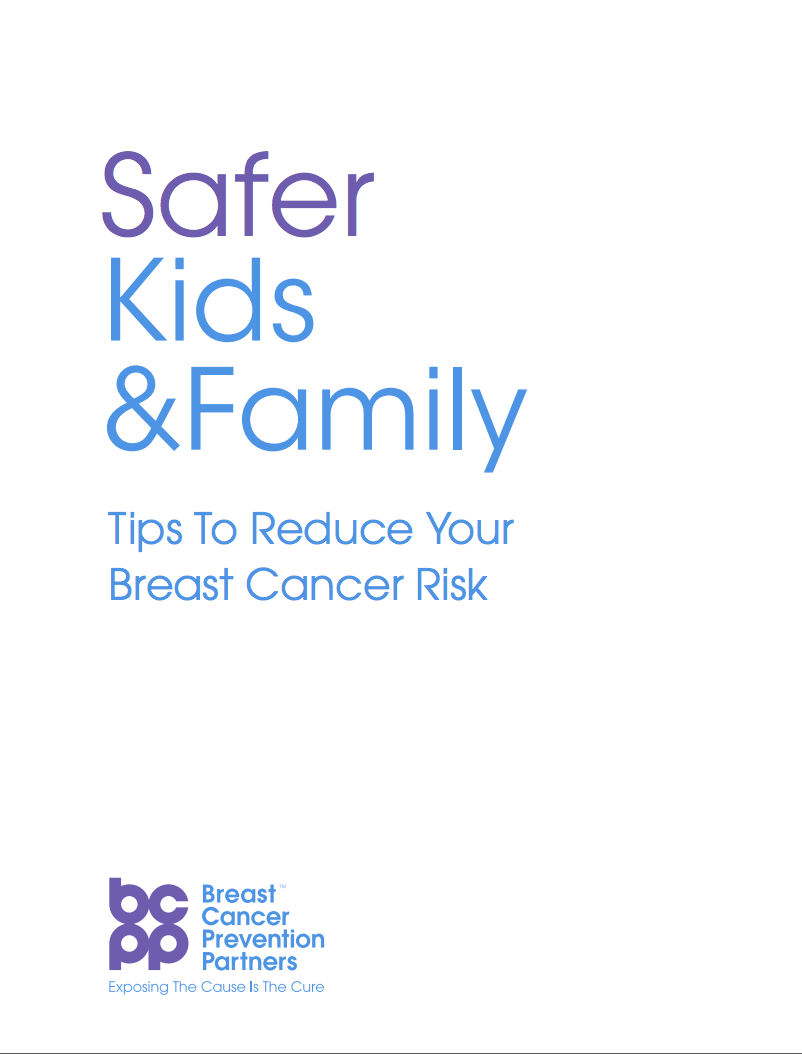Tips for Prevention
Kids and Family Tips
Today, girls are entering puberty earlier than a generation ago. This trend may be due to exposures to endocrine-disrupting compounds such as BPA and phthalates before puberty, when the reproductive system, including breast tissue, is extremely sensitive to low levels of estrogens. The younger girls are when they enter puberty, the greater their risk of breast cancer later in life. Here are some top tips to help protect our kids from later life breast cancer.

At Home
Exchange old foam, furniture and pajamas that contain chemical flame retardants
Start by replacing your old polyurethane foam furniture, nap mats, car seats,strollers and kid’s nighties with safer materials like cotton, wool, and wood. You can also use flame retardant-free foam wrapped with naturally flame resistant materials like cotton and wool. These materials reach the point of combustion more slowly than synthetic materials treated with flame retardants, which are linked to cancer and hormone disruption. Canvas and polyester are also safer alternatives.
Go toxic-free with face paint and kid’s makeup
Enhance an outfit with ears, caps or customized mittens or socks! Try a DIY recipe for face paint, using ingredients like cacao powder or burnt almond, and skip the darkly pigmented makeup. Remember to buy safer products by reading product ingredient labels, and avoiding items with “fragrance” or other Red List Chemicals. Use smartphone apps such as Think Dirty, Healthy Living and Good Guide to check the safety of products. And let your kid be a kid a little longer! Delay introducing them to makeup especially color cosmetics, hair dye, nail polish and lipstick until they are past the critical periods of development for reducing breast cancer risk.
At the table
Go organic and eat chemical-free
Organic produce is grown without harmful pesticides and herbicides. Choose locally grown organic fruits and vegetables from farmer’s markets or your grocery store. Also eat lean meats and low-fat animal products. When we eat meat and dairy products, we also eat the residue of what those animals ate. Choose hormone-free beef and dairy to eliminate your consumption of pesticides and growth hormones that may contribute to an increased risk of breast cancer.
Limit red meat + processed meat products
Processed meat is a recognized carcinogen, and recent research shows evidence of a link between high red meat consumption around adolescence and later life breast cancer. Encourage healthy eating from an early age that includes plenty of vegetables and fruits.
At the doctor’s office
Ask about alternatives to CAT scans and X-rays
Discuss with your child’s medical care team whether or not X-rays or CT scans are necessary and whether there are radiation-free alternatives. If you decide to seek out a second opinion, request that the original screening information be shared, to minimize the need for a second set of exposures if they are not necessary.
At school
Advocate for a healthy school environment
Work with the school authorities to ensure low levels of chemical exposure for all kids– including fresh, organic foods where possible for school meals and healthy snacks, use of low VOC paint, wet mopping of floors every day with non-toxic solutions, use of integrated pest management on campus rather than pesticides and herbicides, a school-wide fragrance-free policy, and safer cleaning products.
FEATURED VIDEO
BCPP: Exposing the Cause is the Cure
We're preventing breast cancer before it starts by eliminating our exposure to toxic chemicals and radiation.
